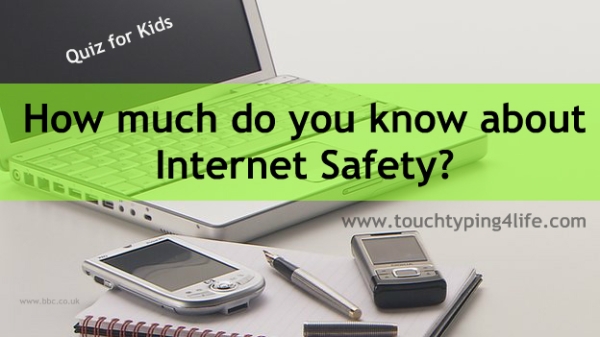Schools
Out of Touch with Typing
 “Many schools aren’t teaching typing anymore because they figure students already are proficient at using keyboards. That’s a wasted opportunity.”
“Many schools aren’t teaching typing anymore because they figure students already are proficient at using keyboards. That’s a wasted opportunity.”
I recently found this article on the MIT Technology Review website by Anne Trubek – August 15th 2011.
As a teacher and a parent I discovered this problem 8 years ago. Since then we (my 1300 students and I) have been working on a solution. 7 years ago Touch Typing 4 Life was born and now we are pleased to release our final product Qwertynomics. We will be releasing more information in January 2014. – Zoe Clements
Most children start typing on cell phones and computers long before they take keyboarding classes, so many schools, noting this trend, have stopped teaching typing. “The kids already know how to type,” the staff at my son’s school told us at curriculum night, “so we have decided to use computer time on something else.”
Who has heard of Squag?
Today I was introduced to Squag and wanted to share it with you. Here are two posts I liked. They are not long or detailed but gives us all a little something to share.
“SquagTM [skwag] is a curated, online experience for kids on the autism spectrum (and their siblings!) that allows them to initiate, explore, and self-discover. Our SquagpadsTM give parents an opportunity to learn about their kids and give kids a new way to learn about themselves, making screen time more meaningful.”
Communication and Friendship
written by Chloe Rothschild on December 30, 2012 –
Something you should know before you read this post:
I communicate better through typing.
Imagine living life, knowing that some people may never know how much you really know, or how smart you really are, because when they talk to you, all you usually say is ‘I don’t know’. But – if you talk to that person on Facebook, Instant Message, e-mail, or texting then you have so much more to say!
There are some people in this world that I may never have the chance to type with on Facebook, e-mail or text. And then those people may not get to have those in depth conversations with me and see how much I really do know, and they may not get a chance to see that I really can be a very good friend.
I may have Autism, but I consider this so much a part of me – just as important as all of the other characteristics that make me who I am.
I am creative, smart, kind, caring, loving, helpful, and so much more. Having autism may make things a little difficult for me sometimes, but it is a big part of who I am.
Chloe Rothschild. is a 20 year-old, self-advocate who is passionate about educating others about autism. She is a young leader for the Autistic Global Initiative, a program through the Autism Research Institute. She writes about sensory issues and differences, communication difficulties, meltdowns and debunking autism myths. In her free time she enjoys drawing and painting monsters, both on paper, and on the computer.
To see the original article click here.
Wireless Keyboard for iPad
Logitech came out with this ridiculously cool keyboard for ipads everywhere. Love that the ten-digit typing (when done properly) promotes inter-hemispheric integration in the brain, making us more regulated and mindful as we type instead of swipe.
To see original article click here.
iPads in education
 I saw this interesting article and from Education Drive and wanted to share it with you.
I saw this interesting article and from Education Drive and wanted to share it with you.
iPads in education: Education Dive’s ultimate guide
The iPad is already an education phenomenon, and Apple will be pushing even more education features when iOS 7 launches later this year. Here at Education Dive, we see more case studies and reports every week about who is using or developing for the iPad, and schools have become battlegrounds where the device is winning some wars—as well as contracts.
So what do you need to know before deciding if your university or school district should buy one (or 11,000)? Education Dive assembled all of our resources and recent news reports in one handy list to fill you in. Take a look at these features, and you’ll be an iPad education expert in no time.
1. APPLE’S IPAD IS AN EDUCATION POWER TOOL
Before we get to the pros and cons, let’s establish what the iPad is—an extremely portable tablet with formidable tool belt of intuitive design features and apps that can help out administrators, instructors and students. Check out our feature about 18 iPad uses in classrooms to see what schools are doing with it, from creating more connected and collaborative classrooms to setting up virtual field trips.
2. THERE ARE LOTS OF ACCESSORIES
Apple’s tablet can do a lot on its own, but Apple and many third-party providers make adapters, styluses and protective products that can help schools get the most of their tech investments. Look no further than Education Dive’s rundown of classroom-appropriate iPad accessories to see what options are out there.
(Image credit: Flickr user Tokyo Times)
3. SCHOOLS AROUND THE WORLD ARE USING THEM
While evaluating how schools are using iPads in 2013, we found plenty of schools in the U.S. finding ways to put the devices to use. The tablets have captured international interest as well, though, with a rural Swedish community using them to give students access to better teachers and Turkey looking into a $4.5 billion initiative that would purchase 15 million iPads.
4. UNIVERSITY OF WESTERN SYDNEY ALONE WANTED 11,000 IPADS
One of the largest announced single-school purchases for the year turned out to be in the Land Down Under. The University of Western Sydney unveiled an11,000-iPad agreement that would distribute Apple’s machines among all of its students and faculty.
5. THAT BUSINESS IS WORTH A LOT TO APPLE
You don’t need to look to Turkey to see how much money there is in the school tablet market. Los Angeles alone is spending $30 million on iPads. At $678 per unit, they’re going to be expensive, but the Los Angeles Unified School District will be getting them pre-loaded with special software.
(Image credit: Flickr user flickeringbrad)
6. APPLE’S OWNS A LOT OF GROUND IN EDUCATION
Education Dive recently performed a survey that looked at how popular Apple’s mobile devices are among university CIOs and higher ed tech institutions in general. According to the CIOs we spoke with, 72% of them useiPads for work. The same number of respondents indicated that their schools had chosen iPads for campus tech needs, and our results in general painted a picture of Apple’s foothold above Android in the education space right now.
7. THE UNIVERSITY OF RICHMOND USES THEM FOR PORTABILITY AND COLLABORATION
Matthew Trevett-Smith, an academic technology consultant who also teaches at the University of Richmond, explained his school’s iPad initiative to Education Dive last year. Faculty members came up with a range of reasons for integrating iPads into their learning environments. Simplifying course delivery and facilitating easier collaboration were just a couple of their goals.
8. LYNN UNIVERSITY REQUIRES THEM
Thanks to wireless infrastructure updates when the school hosted a presidential debate in 2012, Lynn University pushed forward with curriculum updates that now require incoming students to purchase iPad minis. The move played out as part of long-term plan and is expected to save the school as much as 50% of what it had been spending on course readings.
9. SCHOOLS HAVE PLENTY OF NON-IPAD CHOICES
From tablets with other capabilities to cross-platform curriculum options that prioritize accessibility on multiple devices, the iPad has lots of competition in schools. We recently looked at a wide range of iPad alternatives in schoolsand why they are worth considering when budgets and learning experiences enter the decision-making process.
10. IPADS INTRODUCE CHALLENGES, AS WELL AS POTENTIAL REWARDS
In the end, every university or school district that wants to optimize its technology plan needs to think about what it wants to gain or give up. We picked apart a few of the risks and benefits iPads bring to classrooms earlier this month. As with any technology purchase, no one device is best suited for every institution—but any serious tablet competitor right now needs to distinguish itself from Apple’s app store and touchscreens.
June 27, 2013


